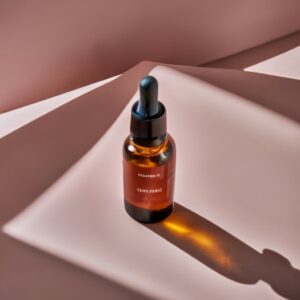
In the realm of natural beauty, few ingredients boast the timeless allure and enchanting fragrance quite like rose oil. Extracted from the delicate petals of the rose flower, this liquid gold has transcended its traditional association with perfumes to become a sought-after elixir for hair care enthusiasts. With a history steeped in beauty rituals dating back centuries, rose oil emerges as a luxurious and versatile solution to transform your hair into a cascade of beauty.
Embark on a journey with us as we delve into the captivating world of rose oil for hair – a beauty secret that transcends time, offering not just a sensory indulgence but also a plethora of benefits for your locks. From its aromatic essence to its nourishing properties, discover why rose oil is becoming an essential addition to the hair care routines of those seeking a touch of elegance and a wealth of benefits for their precious strands.
what is rose oil

Rose oil, also known as rose otto or attar of roses, is an essential oil derived from the petals of various types of roses, most commonly the Damask rose (Rosa damascena) or the Bulgarian rose (Rosa × damascena). The extraction process typically involves steam distillation, a method that captures the aromatic compounds from the rose petals.
Rose oil is renowned for its delightful fragrance and has been used for centuries in perfumes, cosmetics, and traditional medicinal practices. In addition to its pleasant scent, rose oil is known to contain various beneficial compounds, including minerals and vitamins, which can contribute to its positive effects on the skin and hair.
Minerals and vitamins found in rose oil may include:
- Vitamin C: Rose oil is rich in vitamin C, an antioxidant that helps protect the skin and hair from free radical damage. Vitamin C also plays a role in collagen production, contributing to skin elasticity.
- Vitamin A: This vitamin is known for its skin-renewing properties. It helps maintain healthy skin and can contribute to a smoother, more youthful appearance.
- Vitamin E: An antioxidant with moisturizing properties, vitamin E can help nourish and protect the hair and scalp. It also supports overall skin health.
- Calcium: Essential for hair growth and maintenance, calcium is a mineral that contributes to the strength of hair follicles.
- Potassium: This mineral helps maintain the balance of moisture in the hair and skin, promoting hydration and preventing dryness.
- Iron: Iron is crucial for maintaining healthy hair and preventing issues like hair loss or brittleness.
benefits of rose oil for hair

Rose oil offers a range of benefits for hair care, thanks to its nourishing and aromatic properties. Here are some of the key advantages of using rose oil for your hair:
- Moisturizes and Conditions: Rose oil is a natural emollient, helping to lock in moisture and prevent dryness. It conditions the hair, leaving it soft, smooth, and more manageable.
- Strengthens Hair Follicles: The vitamins and minerals in rose oil, such as vitamin C, vitamin A, calcium, and potassium, contribute to the overall health of hair follicles. This can lead to stronger and more resilient hair.
- Promotes Hair Growth: The nourishing properties of rose oil may stimulate blood circulation in the scalp, promoting healthier hair growth. Improved blood flow can supply more nutrients to the hair follicles, supporting their growth cycle.
- Reduces Frizz: Rose oil’s hydrating qualities can help tame frizz and minimize split ends, leaving your hair with a smoother and more polished appearance.
- Adds Shine: Rose oil imparts a natural shine to the hair, enhancing its luster and radiance. It creates a glossy finish that reflects light, making your hair look healthier.
- Soothes Irritated Scalp: If you have a dry or irritated scalp, the anti-inflammatory properties of rose oil may help alleviate discomfort. It can also assist in maintaining a balanced and healthy scalp environment.
- Delicate Aroma: Beyond its practical benefits, rose oil brings a delightful fragrance to your hair. The lingering scent can provide a sensory boost, promoting a sense of well-being and confidence.
- Stress Relief: Inhaling the calming aroma of rose oil during hair care routines can contribute to stress reduction. The therapeutic scent is known for its mood-enhancing and relaxation-inducing qualities.
- Natural Perfume: Due to its pleasant fragrance, rose oil can serve as a natural and subtle perfume for your hair. It offers a delicate scent that lasts throughout the day.
- Antioxidant Protection: Rose oil contains antioxidants, such as vitamin C and vitamin E, which help protect the hair from environmental damage and free radicals. This can contribute to maintaining the overall health and appearance of your hair.
how to make rose oil for hair

Making rose oil at home involves a simple infusion process using a carrier oil and fresh or dried rose petals. Here’s a basic recipe for making rose oil for hair:
Ingredients:
- Fresh or dried rose petals (about 1 cup)
- Carrier oil (jojoba, almond, or coconut oil work well; enough to cover the rose petals)
- A clean, dry glass jar with a tight-fitting lid
- A clean, dry glass bottle for storage
Instructions:
Harvest or Purchase Rose Petals:
If you have access to organic roses, you can harvest the petals. Alternatively, you can purchase dried rose petals from a reputable source.
Clean and Dry:
Ensure that the rose petals are clean and free of any pesticides or contaminants. If needed, rinse them gently and pat them dry.
Prepare the Jar:
Sterilize the glass jar and lid by washing them thoroughly and allowing them to air-dry.
Layer Rose Petals:
Place a layer of rose petals at the bottom of the jar. If you’re using fresh petals, make sure they are completely dry to prevent mold growth.
Add Carrier Oil:
Pour the carrier oil over the rose petals until they are fully submerged. Choose a carrier oil that suits your hair type and preferences. Jojoba, almond, and coconut oil are popular choices.
Seal the Jar:
Seal the jar with the lid tightly. Make sure there are no air bubbles trapped inside.
Infusion Period:
Place the jar in a cool, dark place to infuse. Allow the rose petals to steep in the oil for at least 4-6 weeks. Shake the jar gently every few days to promote even infusion.
Strain the Oil:
After the infusion period, strain the oil using a fine mesh strainer or cheesecloth to separate the rose petals from the oil. Squeeze out any excess oil from the petals.
Transfer to a Bottle:
Pour the strained rose-infused oil into a clean, dry glass bottle for storage. You may want to use a funnel to avoid spills.
Store and Use:
Store the rose oil in a cool, dark place. Apply a few drops to your hair and scalp as needed. It can be used as a leave-in treatment, added to your regular conditioner, or applied before styling.
how to use rose oil for hair

Rose oil can be used for hair in various ways, depending on your preferences and specific hair care needs. Here are some common methods for using rose oil in your hair care routine:
1. Rose Oil Hair Massage:
- Warm a small amount of rose oil in your hands.
- Gently massage the oil into your scalp using your fingertips in circular motions.
- Continue massaging for about 5-10 minutes to promote blood circulation.
- Optionally, distribute the remaining oil through the length of your hair.
- Leave it on for at least 30 minutes or overnight for a deep conditioning treatment.
- Shampoo and condition your hair as usual.
2. Leave-In Hair Treatment:
- Mix a few drops of rose oil with your preferred carrier oil (e.g., coconut, jojoba, or almond oil).
- Apply the mixture to damp or dry hair, focusing on the ends.
- Leave it in without rinsing for added moisture and a pleasant fragrance.
3. Hair Mask with Rose Oil:
- Create a hair mask by mixing rose oil with other beneficial ingredients.
- Example: Mix rose oil with yogurt and honey to create a nourishing mask.
- Apply the mask to your hair and scalp, covering with a shower cap.
- Leave it on for 30 minutes before washing your hair thoroughly.
4. Add to Conditioner:
- Add a few drops of rose oil to your regular conditioner before applying.
- Allow it to sit for a few minutes before rinsing to enhance the conditioner’s benefits.
5. DIY Rosewater Spray:
- Mix rose oil with water to create a rosewater spray.
- Spritz your hair with this mixture for a refreshing and hydrating effect.
6. Styling Aid:
- Use a tiny amount of rose oil as a natural styling aid to tame frizz and add shine.
- Rub a drop or two between your palms and lightly run your hands through your hair.
7. Scalp Treatment:
- Mix rose oil with a carrier oil and a few drops of tea tree oil for a scalp treatment.
- Apply it to your scalp, leave it on for 20-30 minutes, and then shampoo as usual.
Tips:
- Dilution: Always dilute rose oil with a carrier oil to prevent irritation. A few drops of rose oil per tablespoon of carrier oil is a common ratio.
- Frequency: You can use rose oil as a weekly treatment or adjust the frequency based on your hair’s needs.
- Patch Test: Before widespread use, perform a patch test to ensure you don’t have any adverse reactions to the oil.
Storing Shelf Life of Rose Oil for hair

Storing Rose Oil for hair:
- Container: Store your rose oil in a dark glass bottle to protect it from light. Amber or blue glass bottles are commonly used for essential oils as they help prevent light from degrading the oil.
- Cool, Dark Place: Keep the bottle in a cool, dark place, away from direct sunlight and heat. Exposure to light and warmth can accelerate the oxidation process, reducing the oil’s quality.
- Tightly Sealed: Ensure that the bottle is tightly sealed to prevent air from entering. Oxygen can contribute to the degradation of the oil.
- Avoid Temperature Fluctuations: Try to store the oil in a location with stable temperatures. Avoid extreme temperature fluctuations, as they can affect the oil’s composition.
Shelf Life of Rose Oil for hair:
The shelf life of rose oil can vary based on factors such as the quality of the oil, storage conditions, and whether it’s pure rose essential oil or a diluted version. Generally:
- Pure Rose Essential Oil: Pure rose essential oil has a relatively long shelf life, often ranging from 1 to 3 years or more if stored properly.
- Rose-Infused Oil: If you’ve made a rose-infused oil using carrier oil, its shelf life is influenced by the carrier oil used. For example, jojoba and coconut oils are more stable and have a longer shelf life compared to lighter oils.
Signs of Spoilageof rose oil for hair:
- Odor Changes: If the oil develops an off or rancid smell, it may indicate spoilage.
- Color Changes: Changes in color, such as the oil becoming cloudy or developing a darker hue, can also signal degradation.
- Skin Irritation: If the oil causes skin irritation or allergic reactions, it’s advisable to discontinue use.
To extend the shelf life, always use clean and dry utensils when handling the oil, and make sure the cap is securely fastened after each use. If you notice any signs of spoilage, it’s best to replace the oil.
FAQ’S
Does rose help with hair growth? Rose oil is believed to have potential benefits for hair growth. It is known for its moisturizing properties, which can help nourish the scalp and hair follicles. Additionally, rose oil is often used for its calming and soothing effects, creating a healthy environment for hair growth. However, individual responses may vary, and consistent use over time is generally recommended for noticeable results.
What oil is best for hair growth? Various oils are popular for promoting hair growth. Some of the best oils include:
- Castor Oil: Known for its nourishing and moisturizing properties.
- Coconut Oil: Helps prevent protein loss in hair and reduces damage.
- Argan Oil: Rich in nutrients, it promotes overall hair health.
- Jojoba Oil: Mimics the natural oils produced by the scalp, promoting a healthy environment.
- Rosemary Oil: May improve circulation and stimulate hair growth.
What is rose oil good for? Rose oil is versatile and is known for its benefits in skincare, aromatherapy, and hair care. It is commonly used for:
- Skin Care: Moisturizing, soothing, and reducing signs of aging.
- Aromatherapy: Relaxation and stress relief.
- Hair Care: Nourishing the scalp, promoting hair growth, and adding shine.
- Emotional Well-being: Eliciting positive emotions and reducing anxiety.
Is rose oil the same as rosehip oil? No, rose oil and rosehip oil are different. Rose oil is extracted from the petals of the rose flower and is often used in perfumes and skincare for its pleasant fragrance and skin benefits. On the other hand, rosehip oil is extracted from the fruit of the rose plant and is rich in vitamins, antioxidants, and essential fatty acids. While both offer skincare benefits, they have distinct compositions and uses.
How often should you use rose oil on your hair? The frequency of using rose oil on your hair depends on your hair type and needs. Generally, applying rose oil once or twice a week can be beneficial. You can use it as a scalp massage oil or mix a few drops with your regular hair care products. Adjust the frequency based on how your hair responds, and be consistent for better results.
